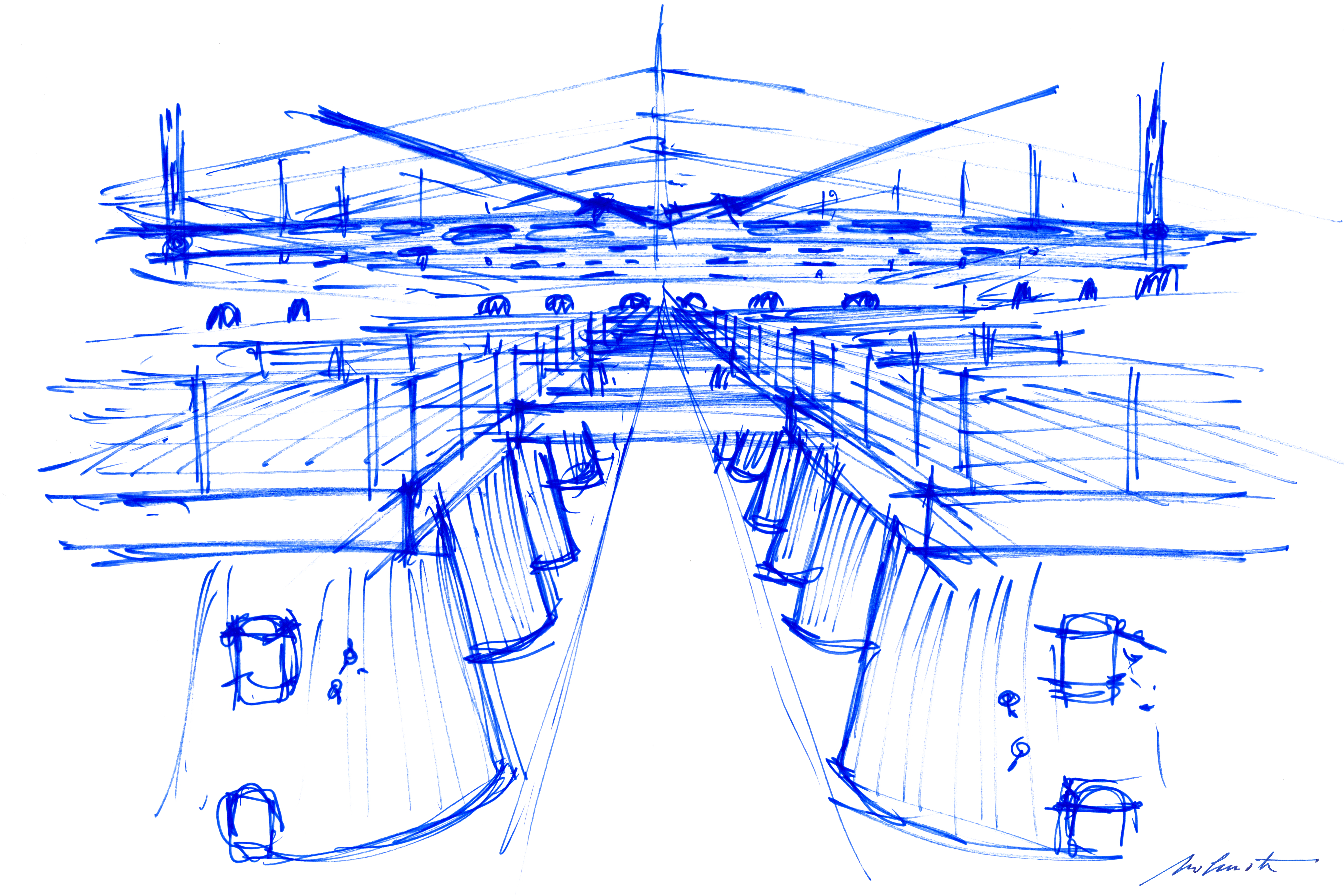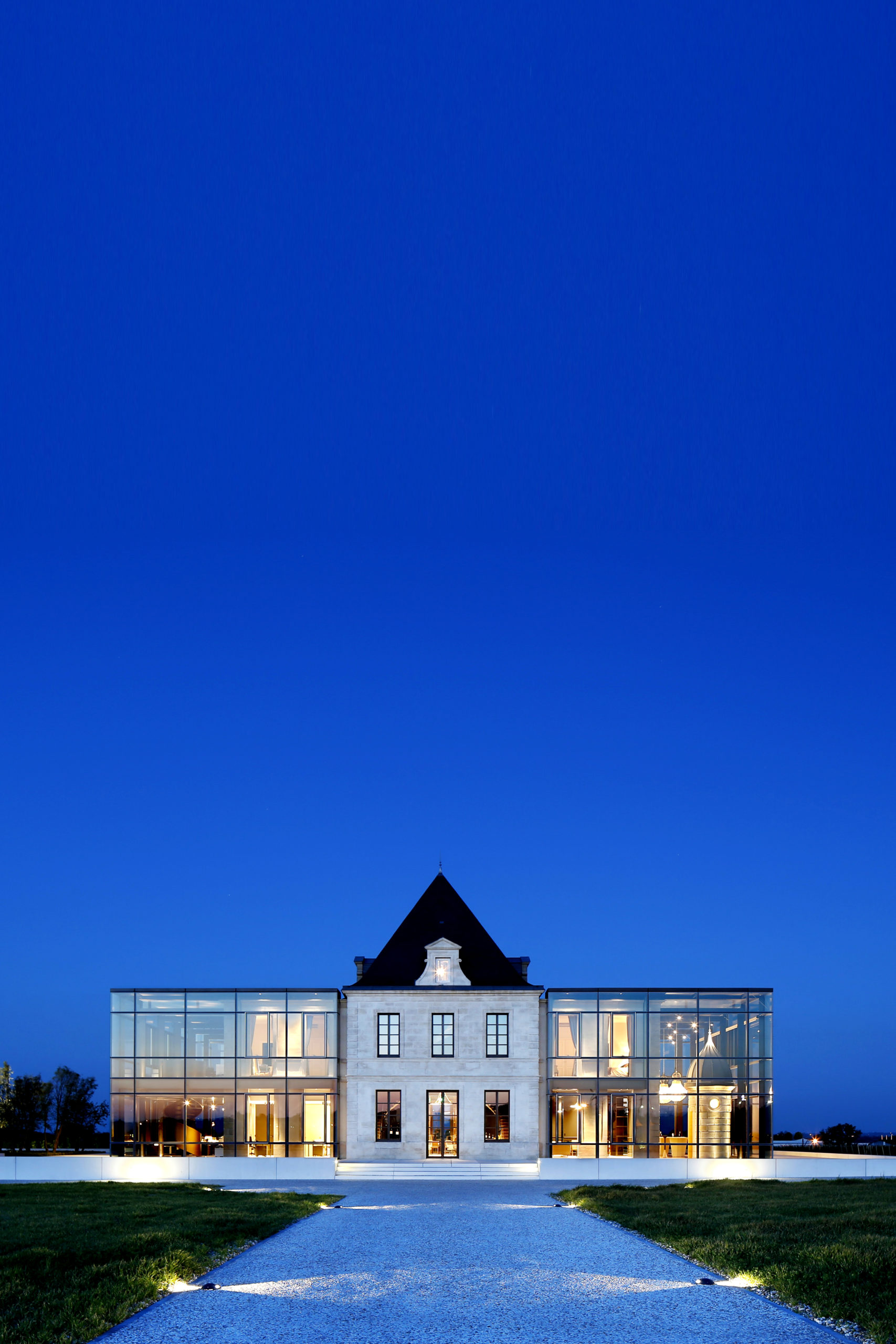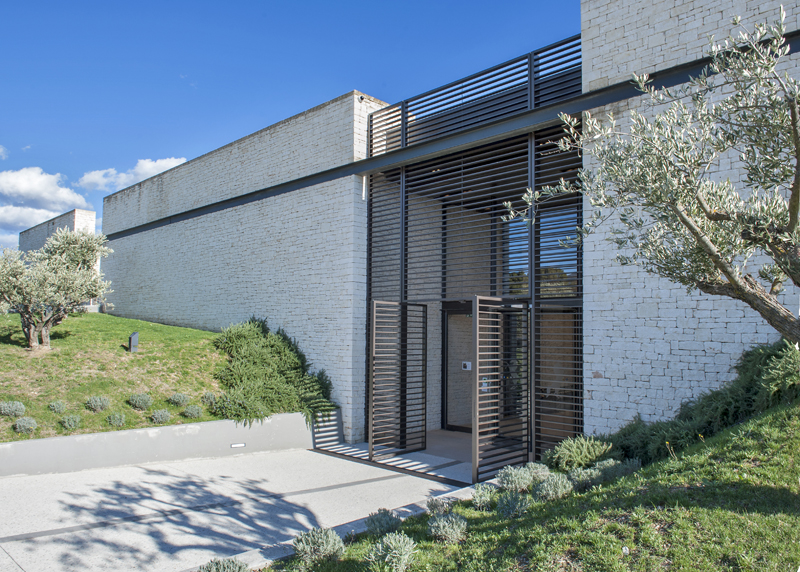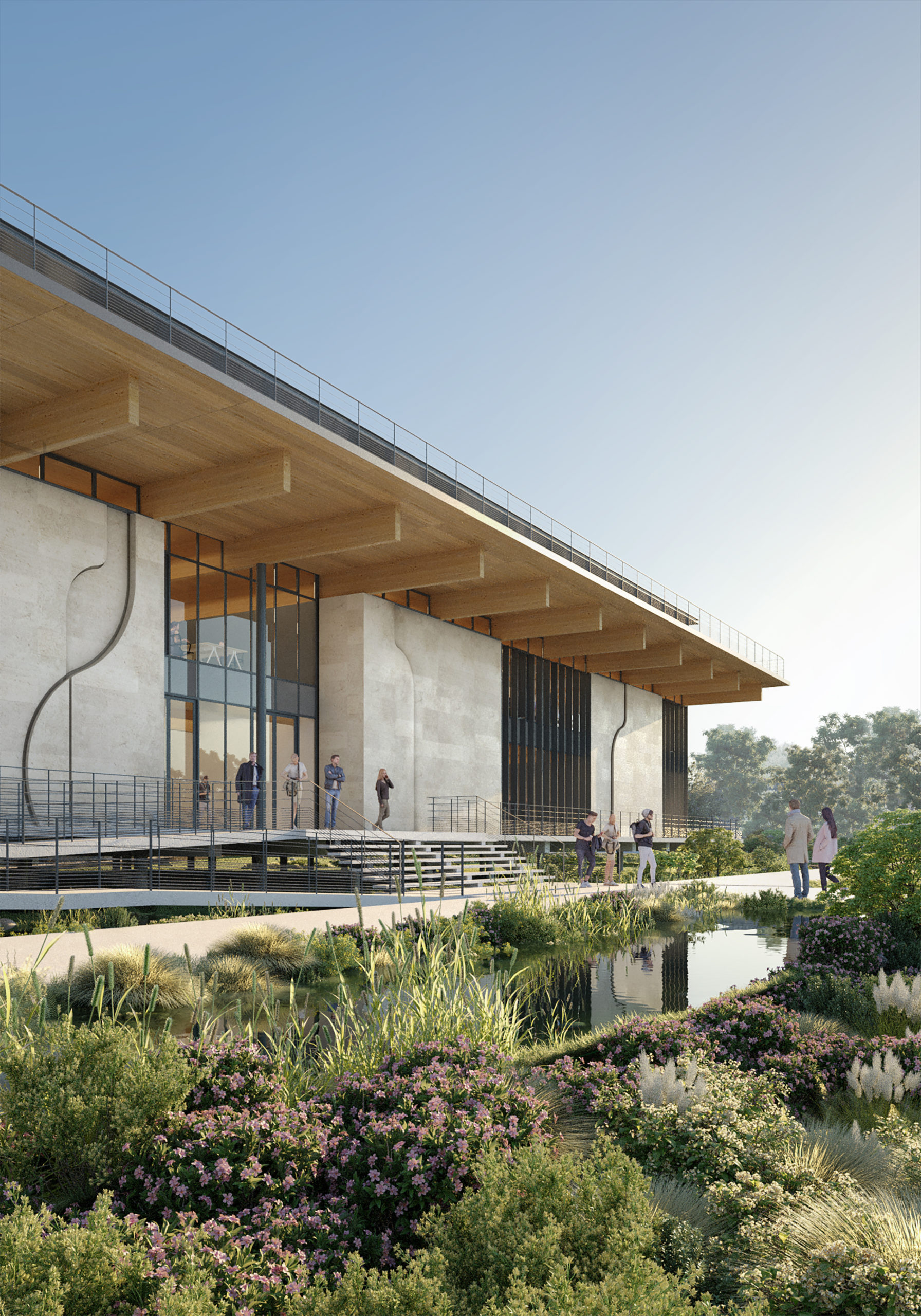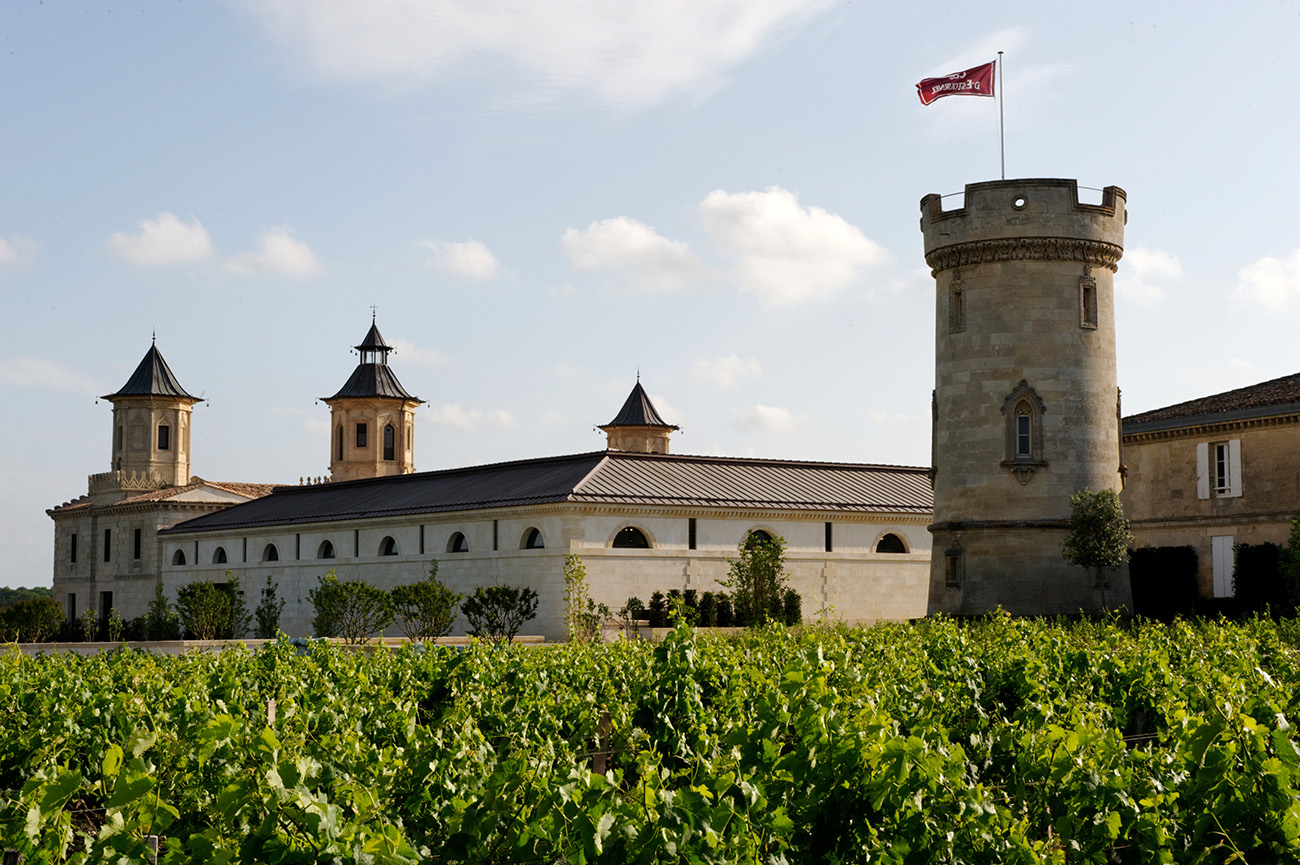
Cos d’Estournel
Saint-Estephe
Groupe Domaines Reybier
Lead architect : WILMOTTE & ASSOCIÉS
Chief Architect of Historic Monuments: ALAIN-CHARLES PERROT
Interior designer for reception rooms: JACQUES GARCIA
Operation Architect: BPM
BET MOE: INGEROP / ALTO
wine process engineering office: J-LOUIS BOUILLET
economist: WATTS CONSEIL
5 300 sq.,
Opening: Septembre 2008
Renovation and extension of the cellars of Château Cos d'Estournel
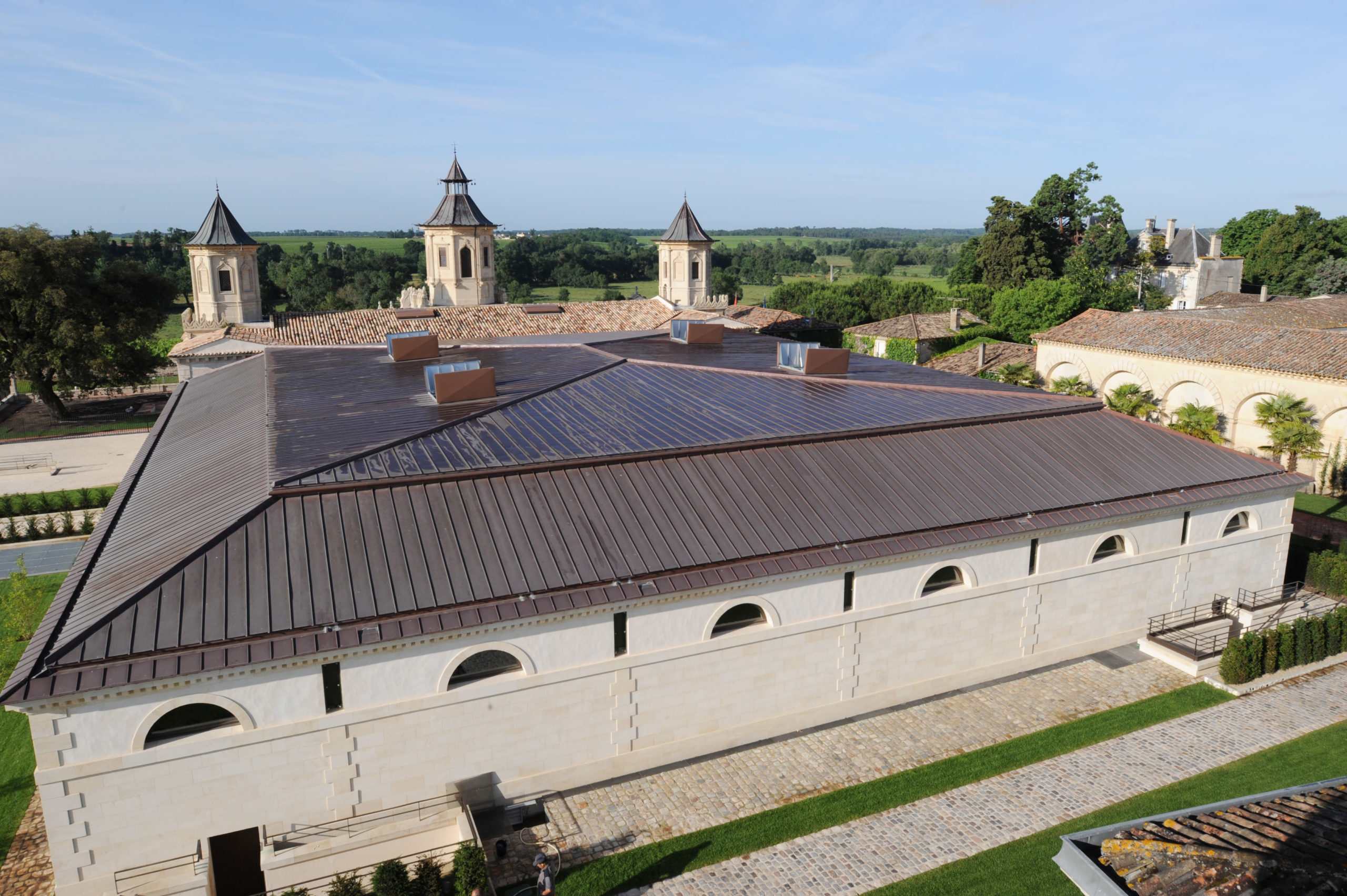
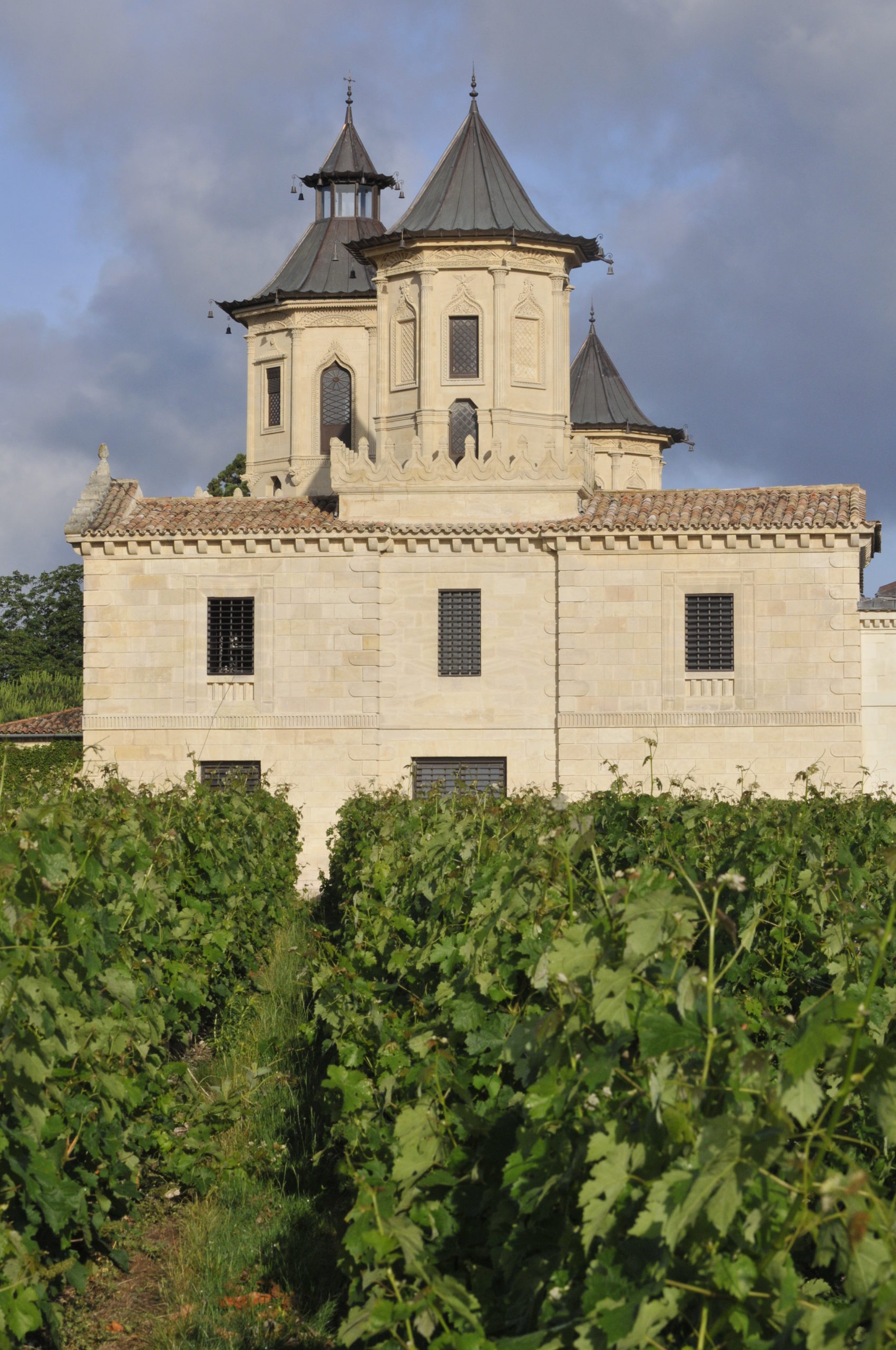
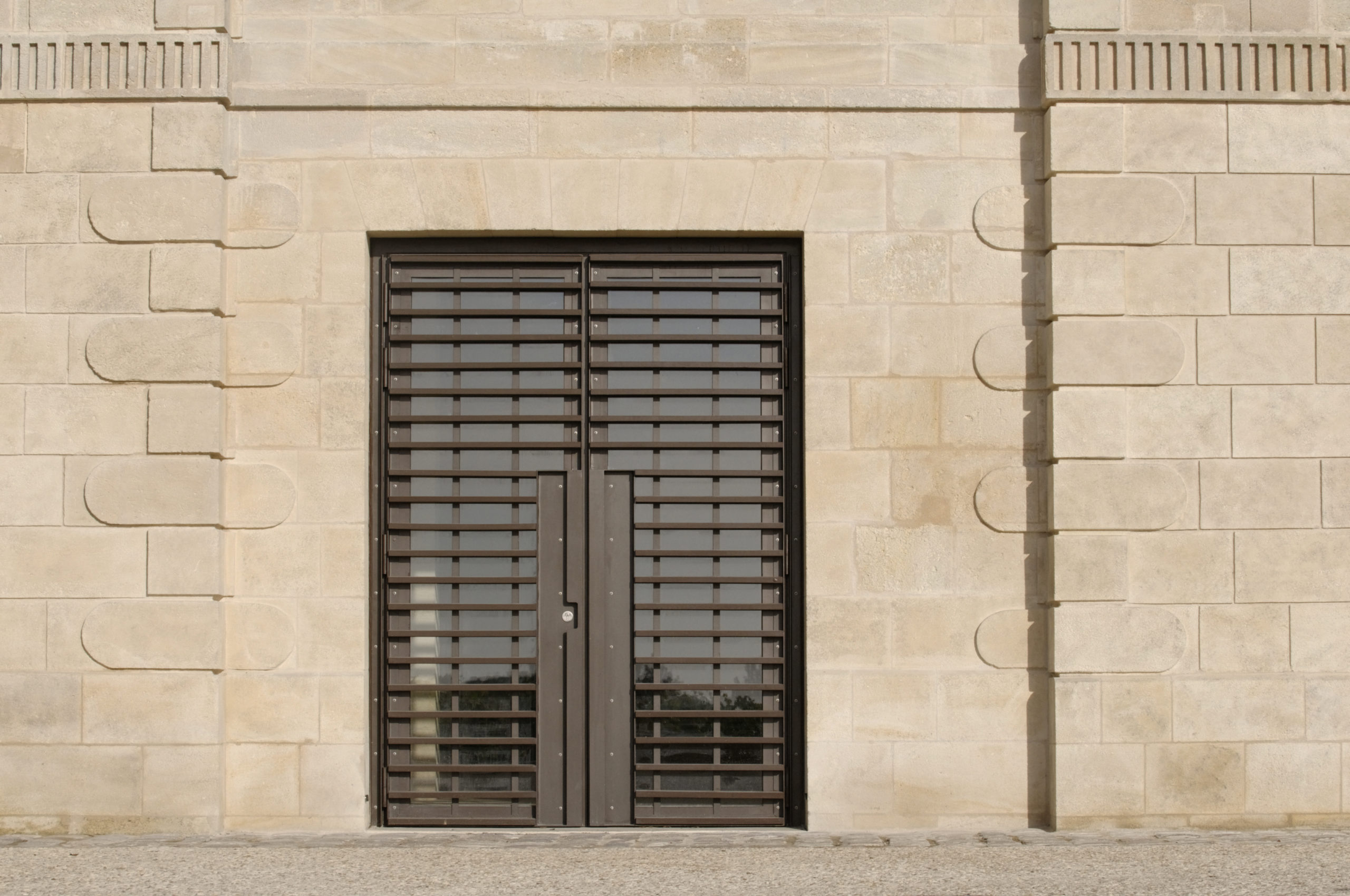
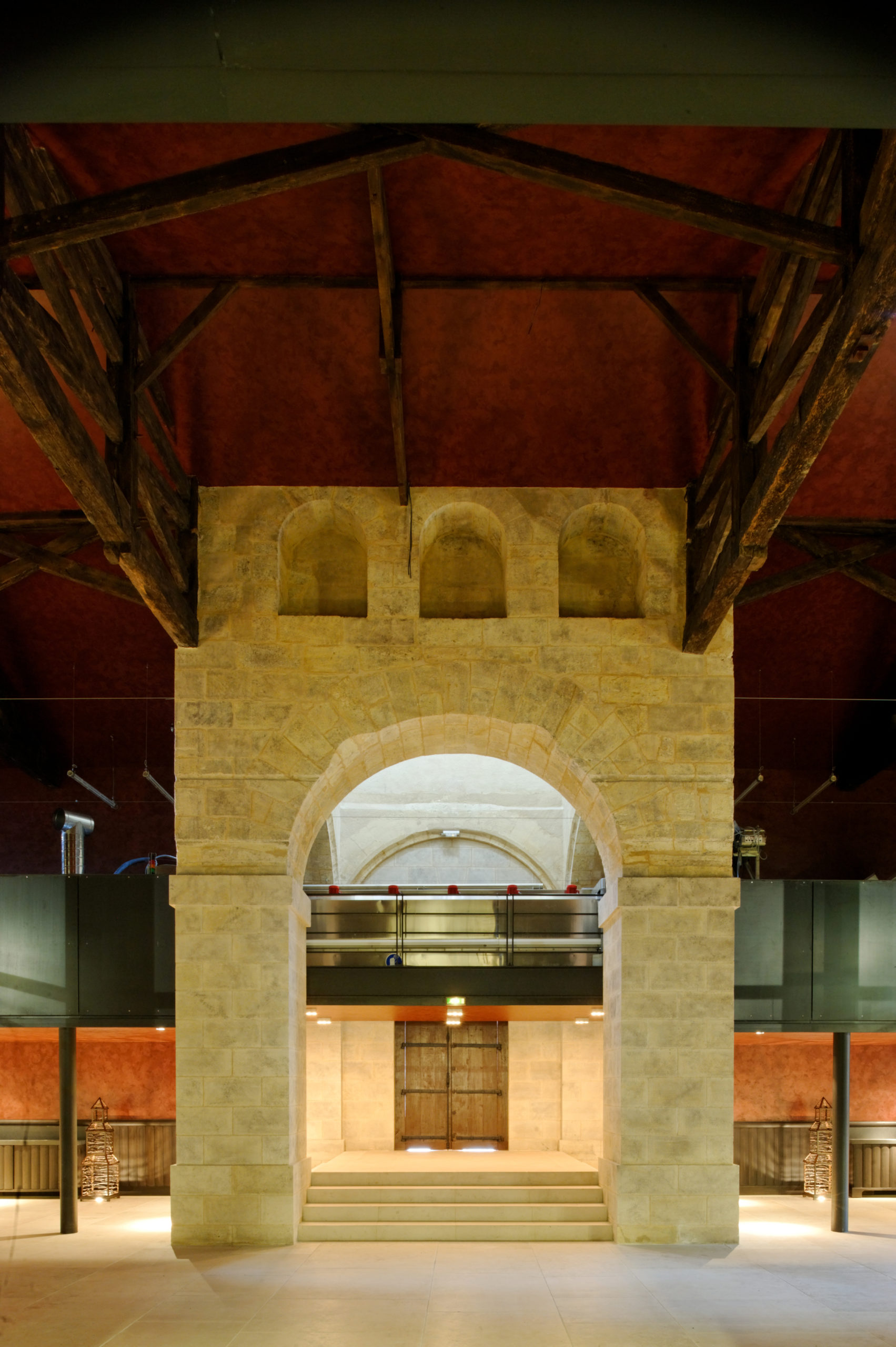
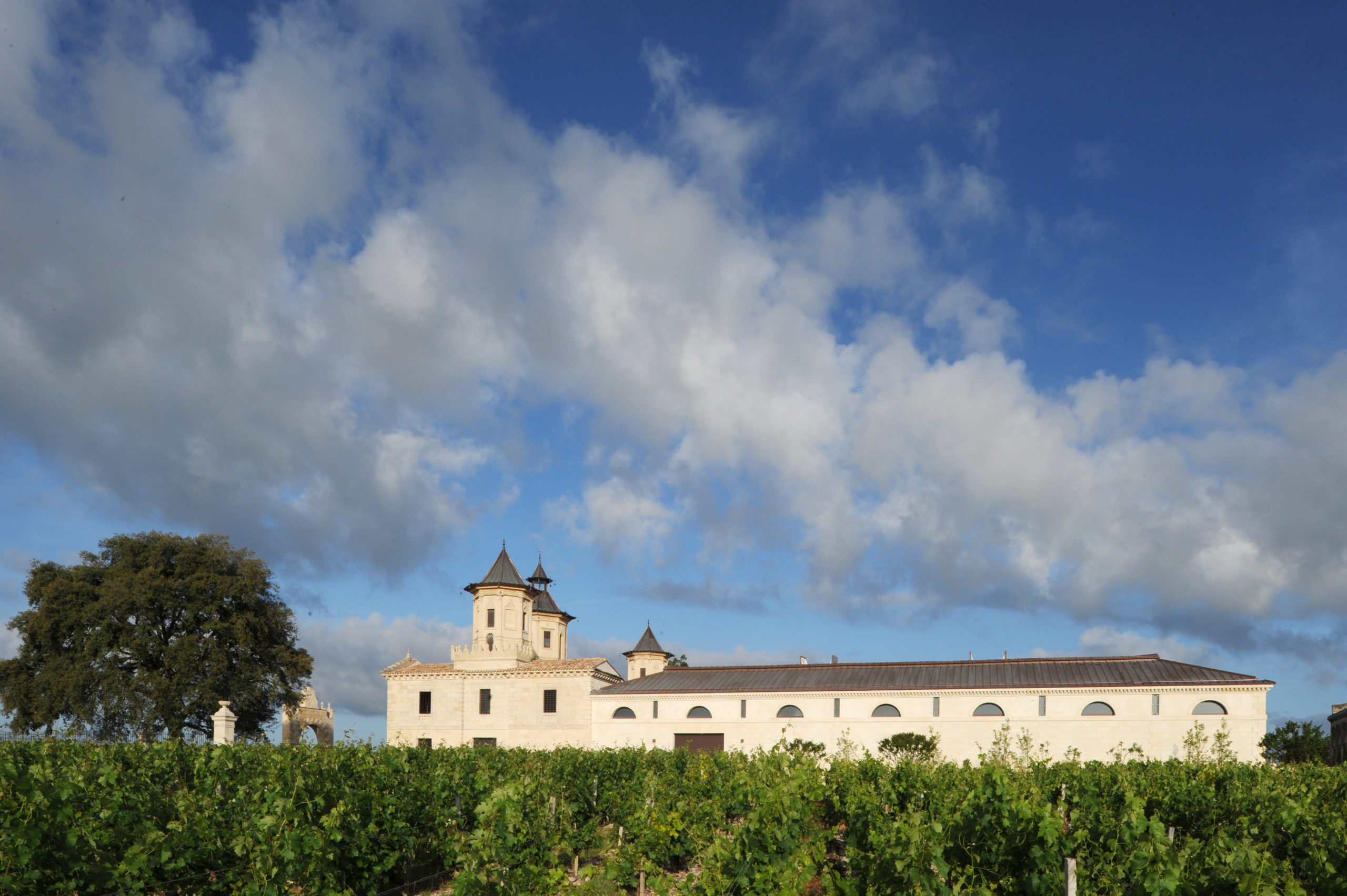
Médoc is home to some of the world's greatest wines. For the Saint-Estèphe appellation, Cos d'Estournel, Grand Cru Classé, is the most famous. Not only is the wine one of the best, but the architecture of the winery (designed by Louis-Joseph Gaspard d'Estournel), whose famous pagoda roofs have earned it the nickname of the Maharadga of Saint-Estephe, is known beyond the borders. At the request of the owner Michel Reybier and his director Jean-Guillaume Prats, Jean-Michel Wilmotte has achieved one of his greatest successes in terms of architectural grafting: leaning against this oriental folly, the cellars and vats have been rebuilt in the templates of the old farm buildings, with the collaboration of the ACMH, Alain-Charles Perrot.
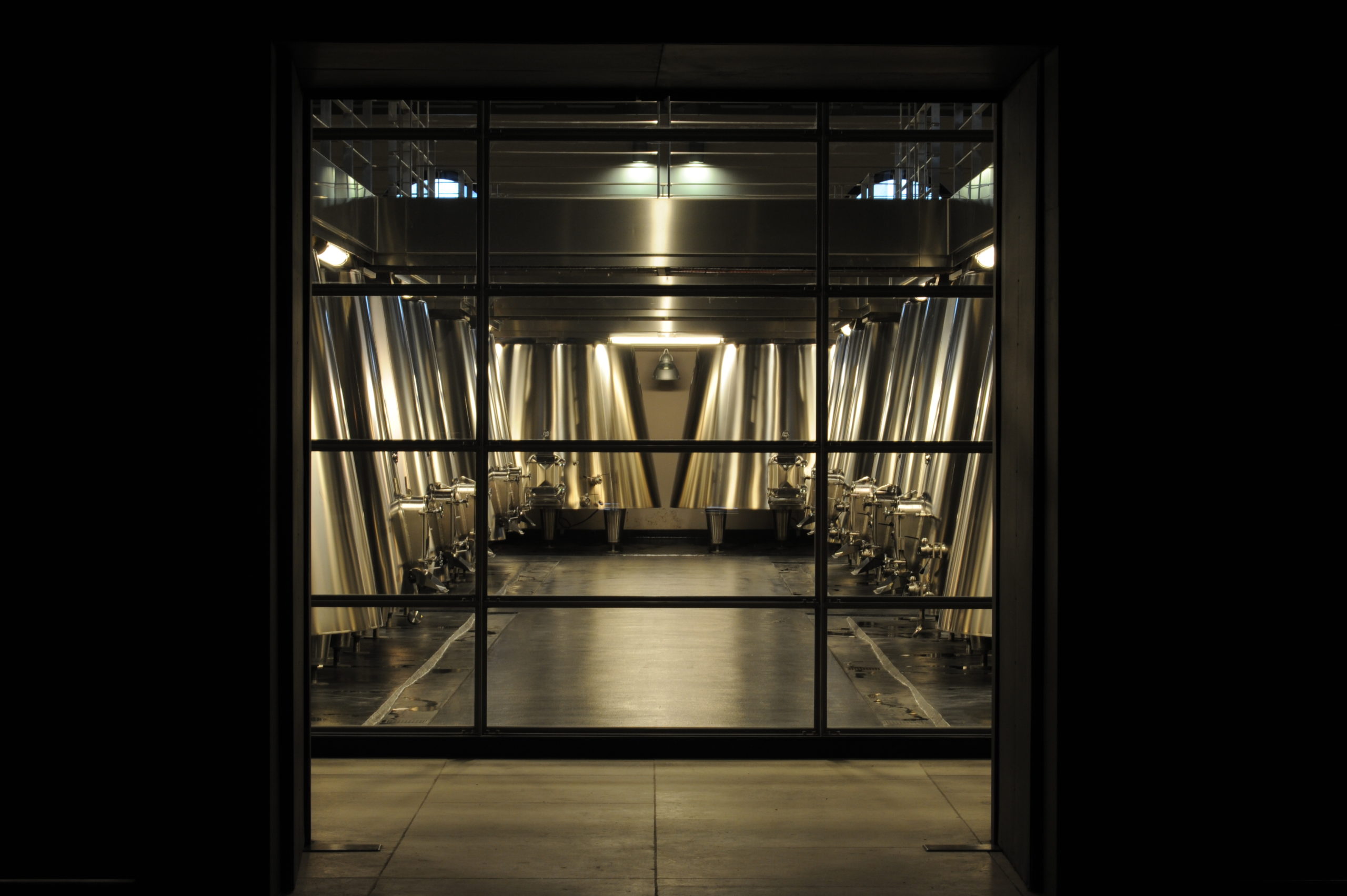
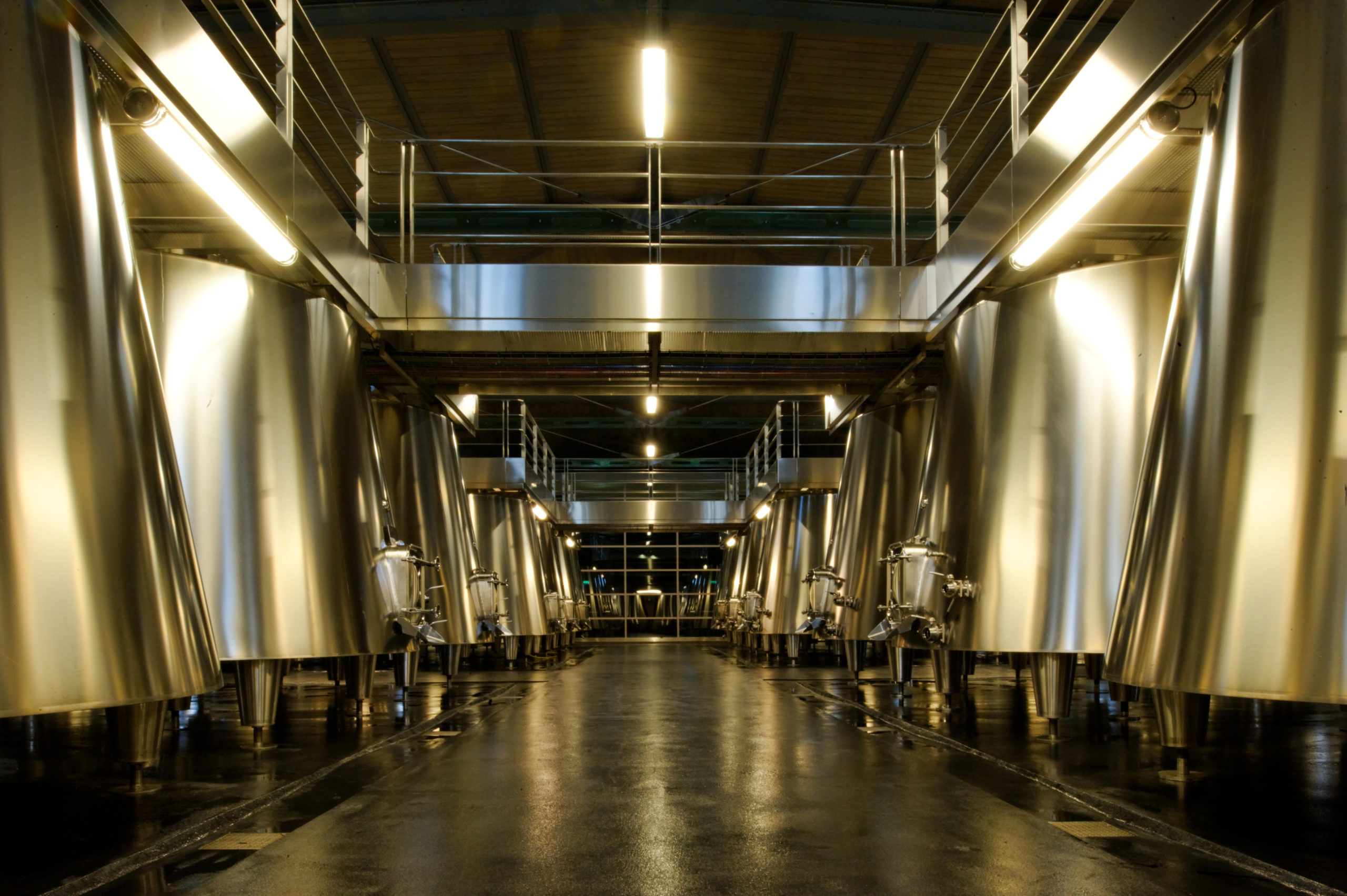
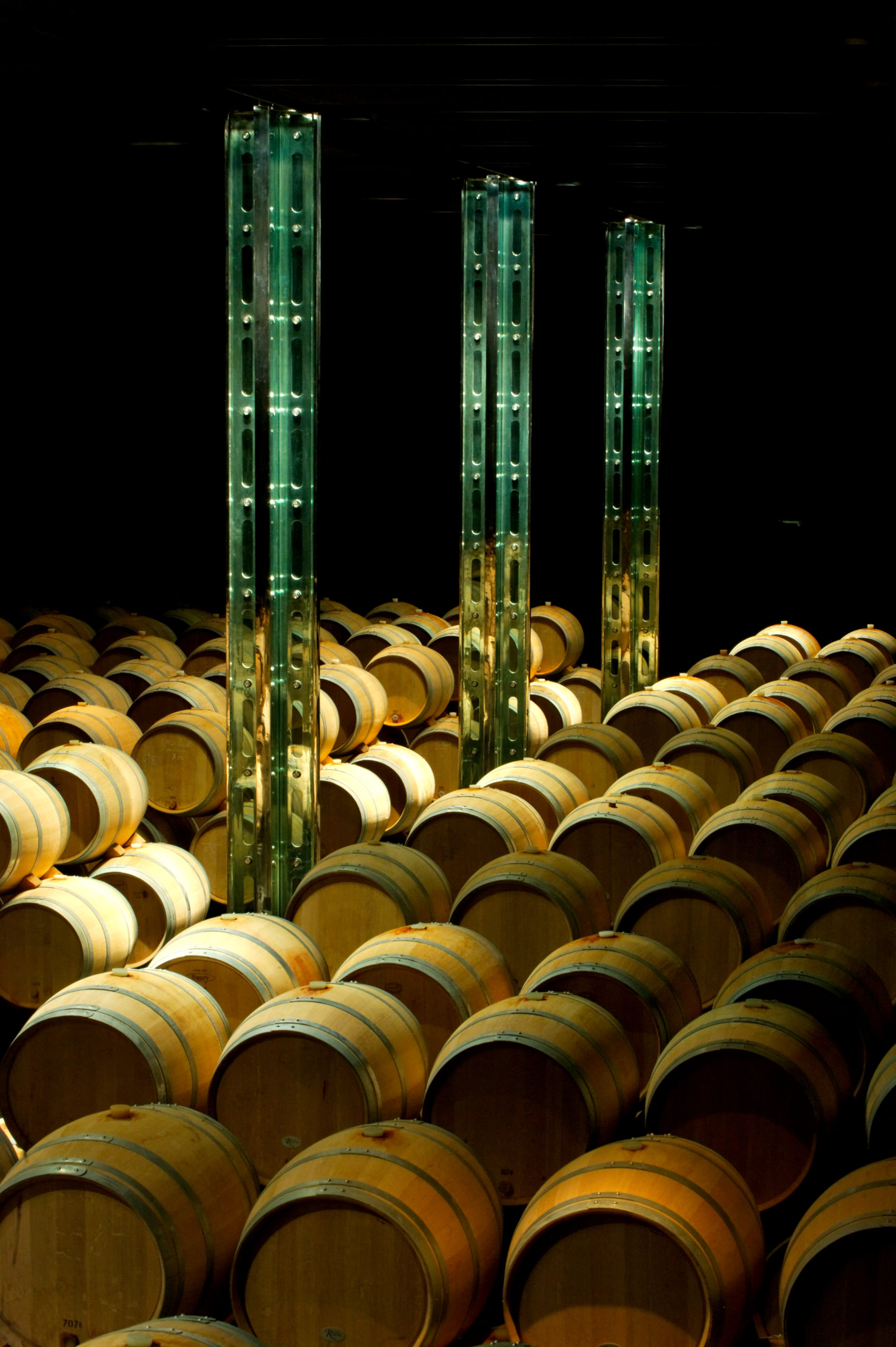
New foundations were laid to a depth of 17 m to accommodate two levels of 2,400 m² each. From the outside, discretion prevails. There is nothing to indicate that this is an ultra-precise oenological work tool.
This new winery incorporates the gravity-fed vinification technique. This means eliminating the pumping system to preserve the aroma and freshness of the grapes and wine. This feat is very rare for a vineyard of this size (90 ha). Above the truncated stainless steel vats (72 in total with a capacity of 25 to 115 hectolitres), one walks on backlit glass slab walkways which allow one to admire the wood, glass and steel framework supported by guy wires. These are the only three materials used in the winery. The metal recalls the vats, the wood responds to the barrel and the glass accentuates the lightness.
Further down, the barrels are underlined by a light coming from glass and stainless steel columns. The chromaticity of the materials gives elegance and mystery to the place.


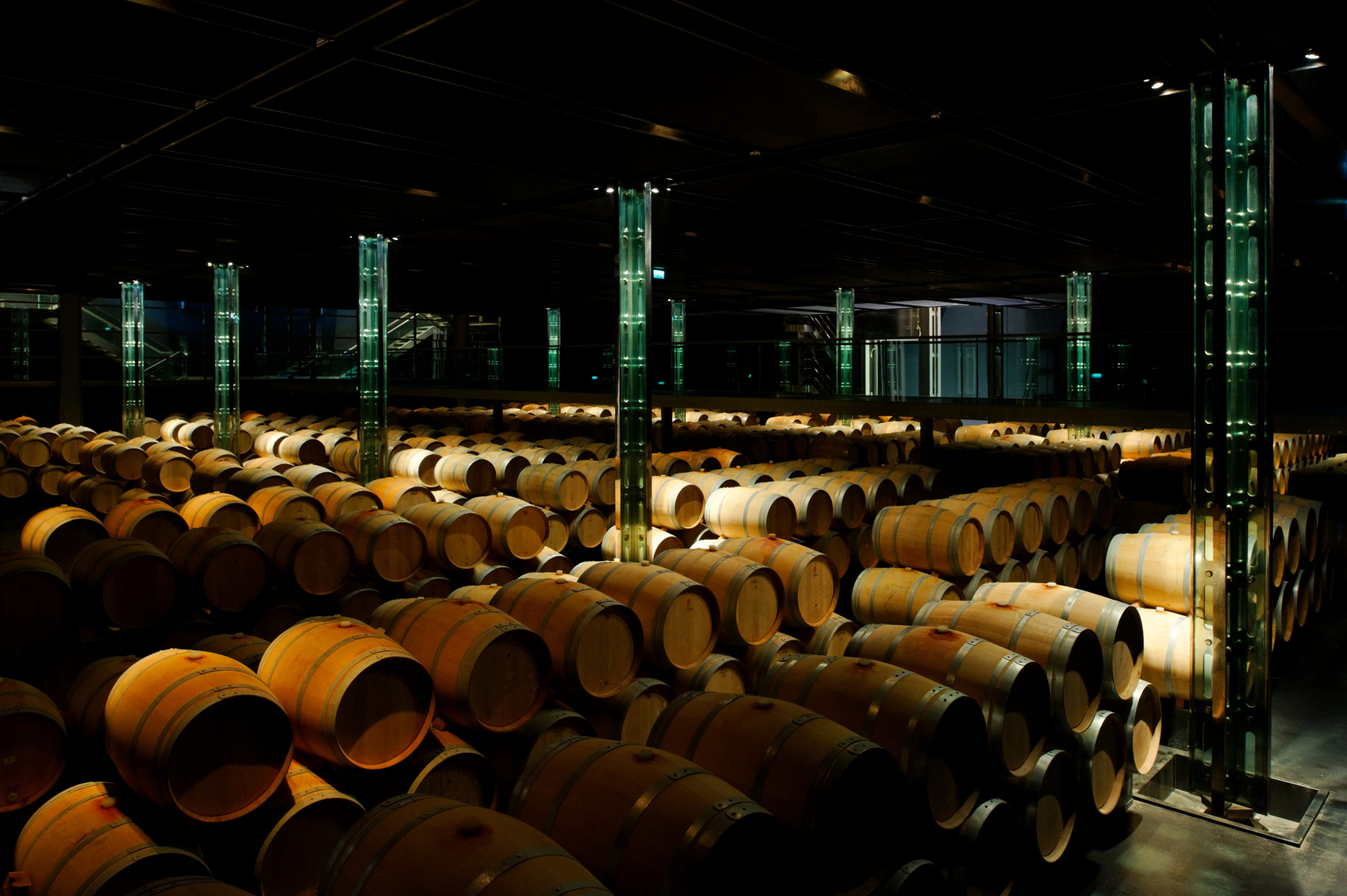
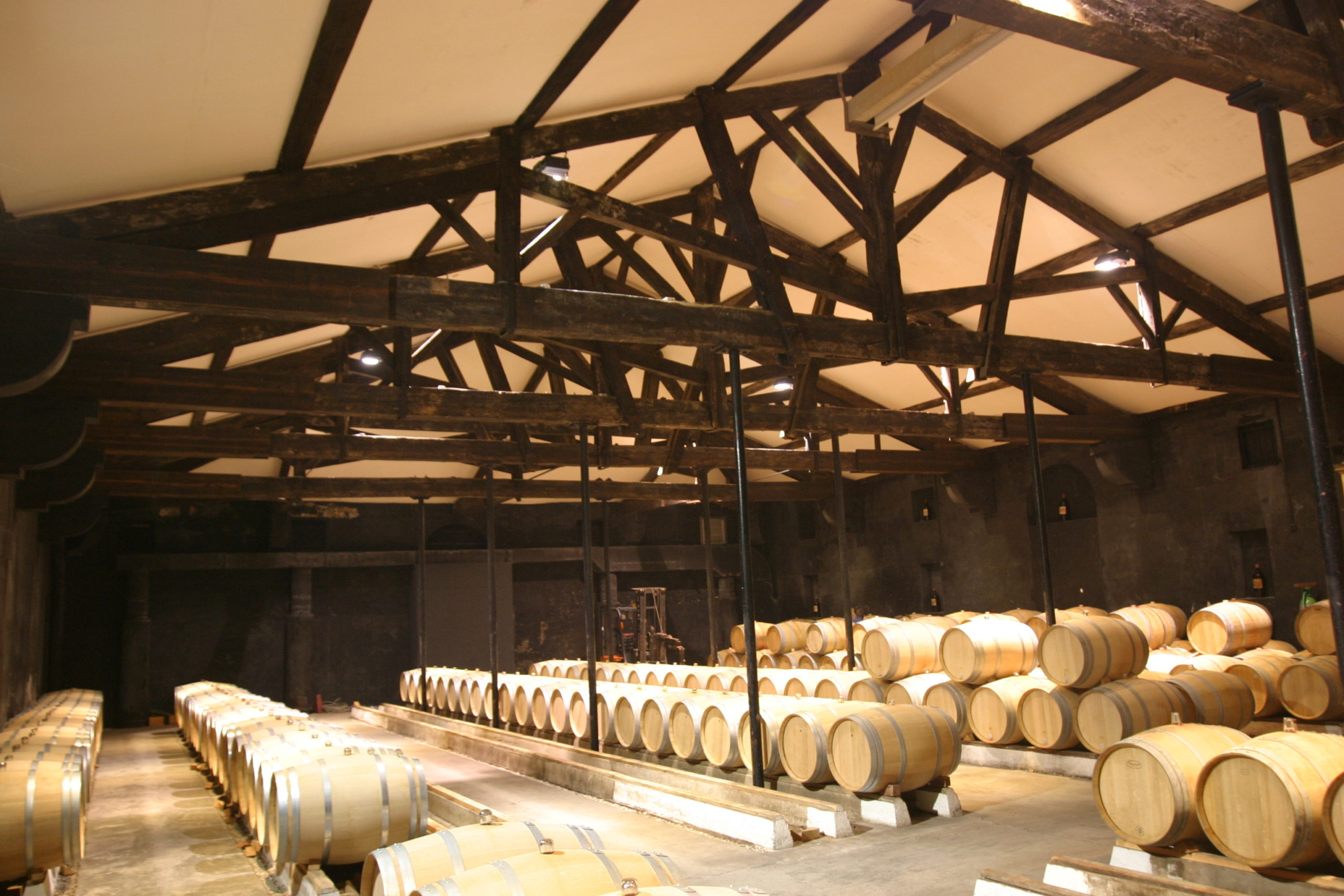

Our role is to put things on stage. We had to imagine a cellar theatre. The 70 stainless steel vats become the material and objects of a sculpture to be created. Our approach here was to find axes of symmetry, to put things in perspective, to regulate, to find a rhythm.
Jean-Michel Wilmotte
architecte
